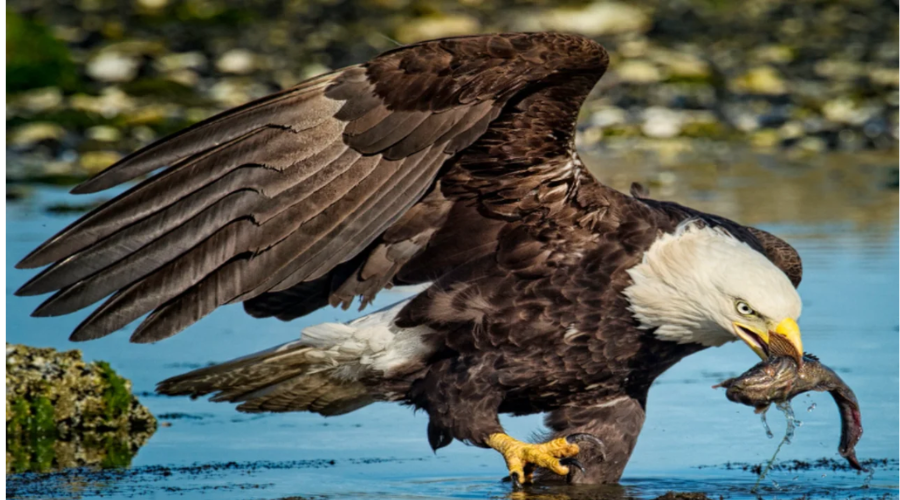Parker and Hancock are not birds; rather, they are surnames commonly associated with people. While Hancock might bring to mind the image of a fictional bird species due to its association with nature and exploration, it does not represent an actual bird. Similarly, Parker is a surname of English origin often carried by individuals rather than avian creatures.
Both names have historical significance and are found across various cultures and communities. Parker originally referred to someone who worked as a park keeper or gamekeeper, while Hancock could be derived from “Hann,” meaning high or chief, combined with “cock,” a medieval term for a leader or chief. So while they may evoke imagery of birds or other natural elements, Parker and Hancock are primarily human names.
Understanding the Meaning of Hancock
The meaning of “Hancock” can vary depending on its cultural and historical context. In English, “Hancock” is often a surname derived from the Old English elements “han,” meaning high or chief, and “coc,” meaning cock or leader. Historically, it may have originally denoted someone in a position of authority or leadership.
One of the most notable associations with the name Hancock is the famous American patriot John Hancock. His name became synonymous with signing one’s name boldly, thanks to his prominent signature on the United States Declaration of Independence. Because of this, “John Hancock” has come to mean a person’s signature in colloquial English.
Thus, the name Hancock carries both historical and linguistic significance, representing leadership, prominence, and the act of signing one’s name with flair.
What are Hancock Birds?
“Hancock Birds” does not refer to any specific real bird species but might evoke the image of colorful and enchanting avian creatures. Although there isn’t scientific recognition of a bird species named Hancock, the term could be used in literature, art, or folklore to depict fictional birds with unique attributes.
Imaginations can soar as stories unfold about these fantastical birds, adorned with vibrant plumage and endowed with melodious songs. While not grounded in biological reality, the concept of Hancock Birds reflects humanity’s enduring fascination with the beauty and wonder of the natural world.
Through creative storytelling and artistic expression, Hancock Birds symbolize our desire to explore and celebrate the diverse and captivating aspects of nature. Whether in tales told to children or in the vivid imagery of art, these mythical creatures inspire awe and appreciation for the avian wonders that truly exist in our world.
Physical Characteristics of the Hancock Bird
The Hancock Bird, being a fictional or imaginative concept, does not have established physical characteristics. However, in creative works, authors and artists often describe the Hancock Bird with vibrant and striking features. These might include brightly colored plumage, elaborate patterns, and unique physical adaptations suited for survival in its imagined habitat.
Imagination can paint the Hancock Bird as a creature adorned with iridescent feathers and endowed with graceful flight. Writers and illustrators may draw inspiration from real bird species to craft the physical appearance of the Hancock Bird, creating a blend of fantasy and natural beauty. These depictions might showcase dazzling color combinations, intricate feather designs, and even whimsical elements like glowing eyes or mythical sounds.
Despite lacking a scientific basis, descriptions of the Hancock Bird’s physical characteristics can ignite wonder and appreciation for the diversity of bird life in the real world. This fictional bird serves as a testament to human creativity and our fascination with the beauty and variety found in nature. Through imaginative storytelling and artistic interpretation, the Hancock Bird symbolizes the limitless potential of the natural world, inspiring awe and reverence for the avian wonders that truly exist.
Habitat and Distribution of Hancock Birds
The Hancock Bird, being a fictional or hypothetical creation, doesn’t have a documented habitat or distribution. However, in imaginative depictions, authors and artists might envision the Hancock Bird residing in lush rainforests teeming with life. Its habitat could be described as dense and verdant, filled with towering trees and cascading waterfalls, providing a picturesque and vibrant environment for these mythical creatures.
In creative works, the distribution of Hancock Birds might be portrayed as limited to remote and unexplored regions of the world. Imaginations might wander to distant lands where these colorful avian creatures roam freely, hidden away from human civilization. These regions could include mystical islands, enchanted forests, or secluded mountain ranges, adding an element of mystery and wonder to their existence.
While not grounded in scientific reality, discussions about the habitat and distribution of Hancock Birds can inspire curiosity about the wonders of nature and the importance of conserving real-life habitats for wildlife. These imaginative portrayals encourage us to appreciate the beauty and diversity of our planet’s ecosystems and remind us of the need to protect and preserve the natural world for future generations. Through the lens of fiction, Hancock Birds symbolize the boundless creativity of human imagination and our enduring fascination with the natural world.
Behavioral Traits and Social Structure of Hancock Birds
In the realm of imagination, the Hancock Bird could be depicted with a variety of behavioral traits and social structures. Authors and storytellers might imagine these birds as highly social creatures, living in flocks and engaging in complex interactions. Their behavior could include intricate courtship displays, melodious singing, and cooperative nesting, showcasing their vibrant and dynamic social lives.
In fictional narratives, the Hancock Bird might exhibit behaviors that mirror those of real birds, such as foraging for food, caring for offspring, and defending territories. These imagined behaviors could include elaborate mating rituals, where the birds display their colorful plumage and perform synchronized dances to attract mates. They might also be depicted as having strong family bonds, working together to build nests and protect their young.
Imaginations might soar as stories unfold about the unique behaviors and social dynamics of these fantastical avian creatures. For instance, the Hancock Bird could be portrayed as having a hierarchical social structure, with leaders and followers within the flock, or as solitary adventurers exploring their lush habitats. Their interactions could be depicted as harmonious and cooperative, reflecting an idealized vision of nature’s beauty and complexity.
Through these creative depictions, the Hancock Bird symbolizes the richness and diversity of avian life, even if only in the world of fiction. These stories encourage a deeper appreciation for the behaviors and social structures of real birds, highlighting the importance of observing and understanding the natural world. By imagining the lives of Hancock Birds, we celebrate the wonders of avian behavior and the intricate social networks that make the animal kingdom so fascinating.
Diet and Feeding Habits of Hancock Birds
In the realm of imagination, the Hancock Bird might be envisioned with a diverse diet and unique feeding habits. Imaginative depictions could portray these birds as nectar feeders, gracefully sipping from exotic flowers in tropical rainforests. Alternatively, they might be depicted as insectivores, darting through the canopy to catch insects mid-flight with remarkable agility and precision.
Authors and artists might imagine the Hancock Bird employing clever foraging techniques, such as using tools to extract food or engaging in cooperative hunting strategies with other members of their flock. These imaginative behaviors could include using twigs to extract insects from tree bark or working together to herd insects into areas where they can be easily caught.
Within fictional narratives, these birds could play vital roles in ecosystem dynamics by pollinating plants or controlling insect populations. Their interactions with the environment might be depicted as essential for maintaining the balance of their imagined habitats, showcasing the interconnectedness of all living things.
These imaginative depictions of the Hancock Bird’s diet and feeding habits not only highlight the creativity of authors and artists but also reflect the complexity and diversity of real-world avian behaviors. By exploring the fictional feeding habits of the Hancock Bird, we can gain a greater appreciation for the intricate and fascinating ways that real birds interact with their environments. This imaginative exploration encourages us to value and protect the natural habitats that support the rich tapestry of life on Earth.
Frequently Asked Questions
What Is It Called When Birds Land?
When birds land, it’s called perching. They use their feet to grip onto branches, wires, or other surfaces, allowing them to rest or observe their surroundings.
Is Hen a Female Bird?
Yes, a hen is a female bird, especially of domesticated species like chickens. Hens are known for laying eggs and play a vital role in reproduction within bird populations.
What Is the National Bird of Israel?
The national bird of Israel is the Hoopoe. Known for its distinctive crown of feathers and striking plumage, the Hoopoe holds cultural significance in Israel and is celebrated for its beauty and grace.
What Is the National Bird of Pakistan?
The national bird of Pakistan is the Chukar Partridge. With its distinctive red beak and grey-brown plumage, the Chukar Partridge is a symbol of beauty and resilience in Pakistani culture.
Conclusion
The concept of the Hancock Bird, while it may evoke vivid imagery and spark the imagination, does not correspond to any recognized species in the scientific world. Instead, it serves as a testament to humanity’s enduring fascination with the natural world and our capacity for creativity and storytelling. Through imaginative depictions, the concept of the Hancock Bird invites us to explore the wonders of nature in new and exciting ways, inspiring curiosity and appreciation for the diversity of avian life.
Although the Hancock Bird may not exist in reality, its imaginary existence encourages us to ponder the mysteries of the natural world and the boundless possibilities of our imagination. Whether it’s through literature, art, or folklore, the idea of the Hancock Bird reminds us of the magic that lies in our ability to dream and create fantastical tales that capture the beauty and wonder of the world around us.
By celebrating the fictional Hancock Bird, we also reflect on the real-life marvels of avian species and their habitats, emphasizing the importance of conservation and respect for the natural environment. The Hancock Bird, though a creation of the mind, ultimately enhances our appreciation for the real birds that inspire such creativity and the vibrant ecosystems they inhabit.
“Explore unique insights and captivating stories on the world of avian wonders at Infosekker.com.”




